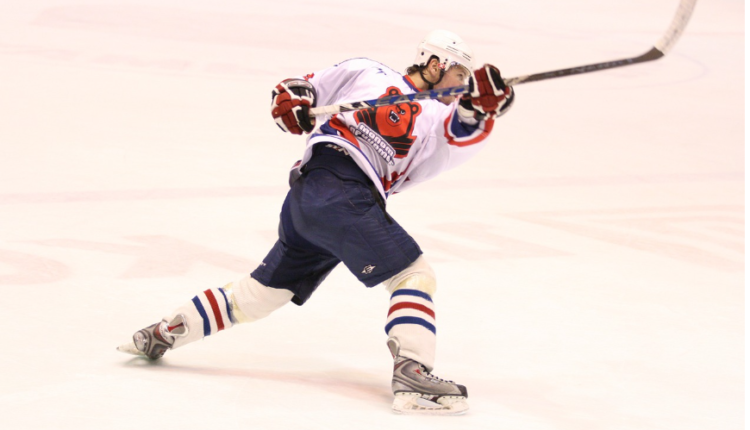Ice hockey is a fast-paced, highly competitive sport enjoyed by millions worldwide. Whether you’re a beginner or a seasoned fan, understanding the number of players involved in the game is essential for grasping its dynamics. In this comprehensive guide, we will break down the number of players on an ice hockey team, their roles, and how game regulations impact player participation.
Standard Number of Players on the Ice
In a regulation ice hockey game, each team has six players on the ice at a time. These six players include one goaltender and five skaters. The skaters are typically divided into three forwards (center, left wing, and right wing) and two defensemen.
The purpose of these six players is to create a balanced lineup that allows for both offensive and defensive play. The forwards are responsible for scoring and pressuring the opposing team’s defense, while the defensemen protect their goaltender and work to regain possession of the puck. The goaltender, or goalie, is the last line of defense, preventing the opposing team from scoring by blocking shots on goal.
However, this number is not fixed for the entire game. Substitutions are a key part of ice hockey, allowing teams to maintain fresh legs on the ice. Players rotate in and out in a process called “line changes,” which ensures a high level of intensity throughout the game. In special situations, such as power plays and penalty kills, the number of players can change temporarily, leading to strategic adjustments.
Total Roster Size in Ice Hockey
Although only six players from each team are on the ice at a time, the total number of players on a team is much larger. In professional leagues like the National Hockey League (NHL), teams are allowed to have a roster of up to 23 players. This includes 20 active players (dressed for each game) and three additional players who may be scratched from the lineup but remain available as reserves.
Teams usually carry 12 forwards, six defensemen, and two goaltenders in their active lineup. This distribution ensures that the team has enough depth to accommodate injuries, penalties, and fatigue. During a game, teams rotate through four lines of forwards and three pairs of defensemen, making sure that players do not become overly exhausted.
At the amateur and international levels, the roster size may vary slightly. For example, in Olympic hockey, teams can register up to 25 players, though only 20 can be active in a game. In college and junior leagues, roster sizes also fluctuate based on league rules and competition levels.
Role of Substitutions and Line Changes
Unlike many other sports, ice hockey allows for unlimited substitutions during the game. This is crucial due to the physically demanding nature of the sport. Players typically stay on the ice for shifts lasting between 30 seconds and two minutes before heading to the bench for a fresh replacement.
Line changes can occur in different ways:
- On-the-fly substitutions – Players can switch out during gameplay without stopping the action. This requires precise timing and coordination to ensure the new player does not enter the ice too early, resulting in a penalty for too many men on the ice.
- During stoppages – When play is halted due to an offside, icing, penalty, or a goal, teams can make changes before the puck is dropped for the next faceoff.
Strategic line changes play a vital role in keeping the team competitive, allowing coaches to match specific players against opponents based on strengths, fatigue levels, and tactical needs. Some lines specialize in offense, while others focus on defense, making line management a crucial aspect of coaching.
Special Situations Affecting the Number of Players
While six players per team is the standard, certain game situations can alter this number. These include:
- Power Plays and Penalty Kills – When a player commits a penalty, they serve time in the penalty box, leaving their team short-handed. The opposing team then has a power play, meaning they have more players on the ice, creating a numerical advantage. A typical power play situation results in a five-on-four scenario, but major penalties can lead to a five-on-three advantage.
- Empty Net Situations – Towards the end of a game, if a team is trailing, they may pull their goaltender in favor of an extra attacker. This creates a six-on-five advantage in an attempt to score a tying goal. However, this also leaves their own net unguarded, increasing the risk of conceding an easy goal.
- Delayed Penalties – If a penalty is about to be called against one team but they do not yet have possession of the puck, the opposing team can bring on an extra attacker while the goaltender skates to the bench. This temporarily gives them an advantage until play is stopped for the penalty call.
These unique situations add an extra layer of strategy to the game, requiring teams to adapt quickly to changing circumstances on the ice.
Conclusion
Understanding the number of players in ice hockey is fundamental to grasping the sport’s rules and strategies. While six players per team are on the ice during standard play, roster sizes and substitutions make the actual number of players involved much higher. The ability to rotate players efficiently, manage power plays, and make strategic decisions regarding player deployment significantly impacts a team’s performance.
Whether you’re a newcomer to the sport or an experienced fan, knowing how player participation works enhances your appreciation of the game’s fast-paced and strategic nature. Ice hockey is a sport of continuous action, requiring teamwork, endurance, and adaptability, making it one of the most exciting sports to watch and play.


Comments are closed, but trackbacks and pingbacks are open.